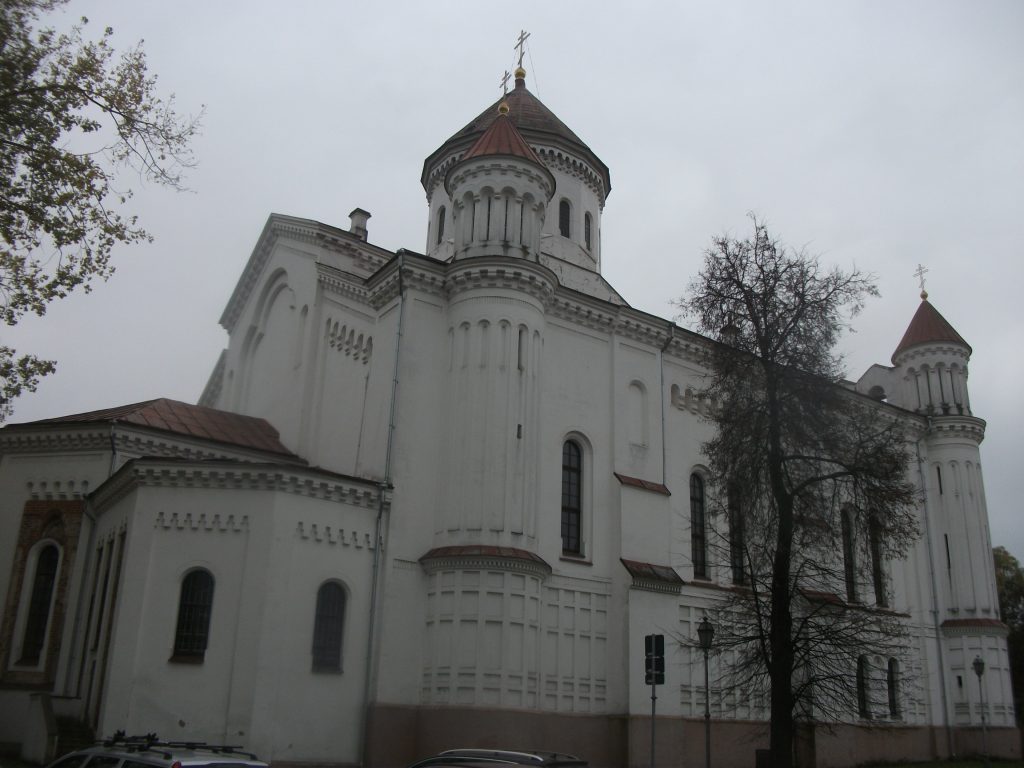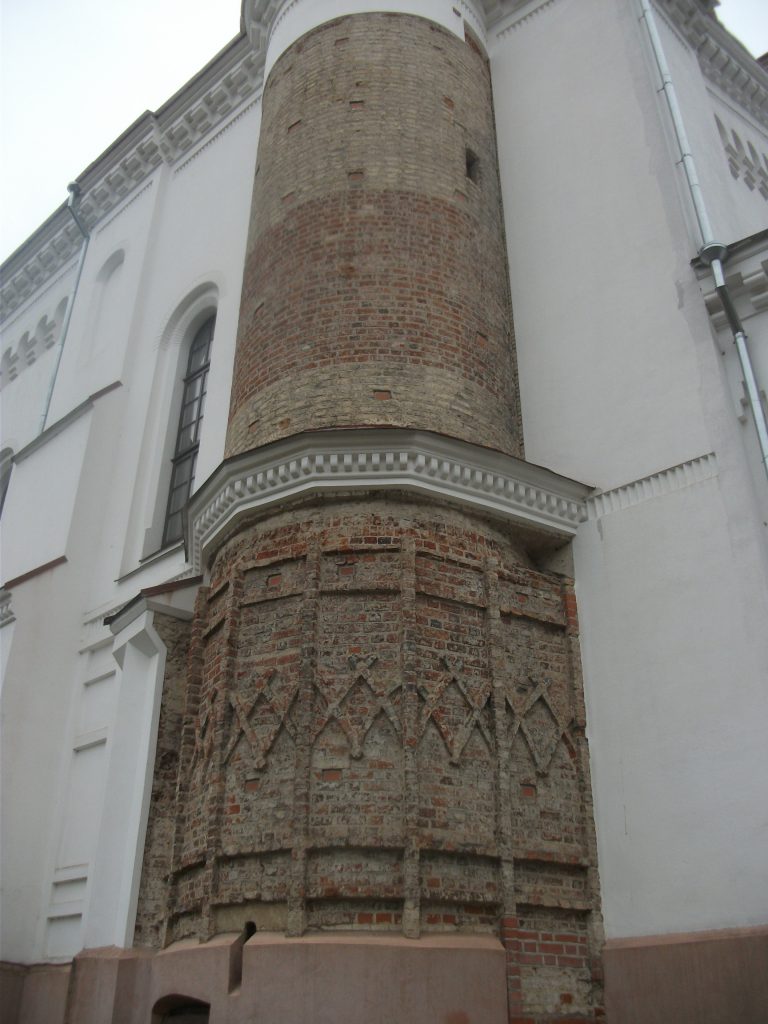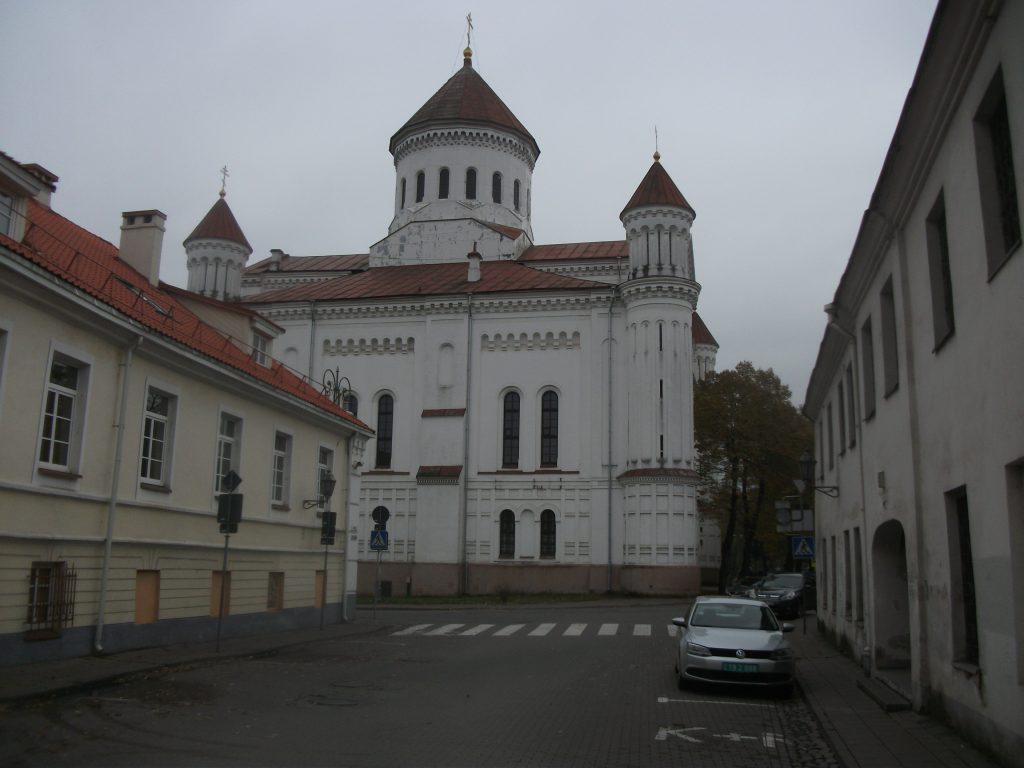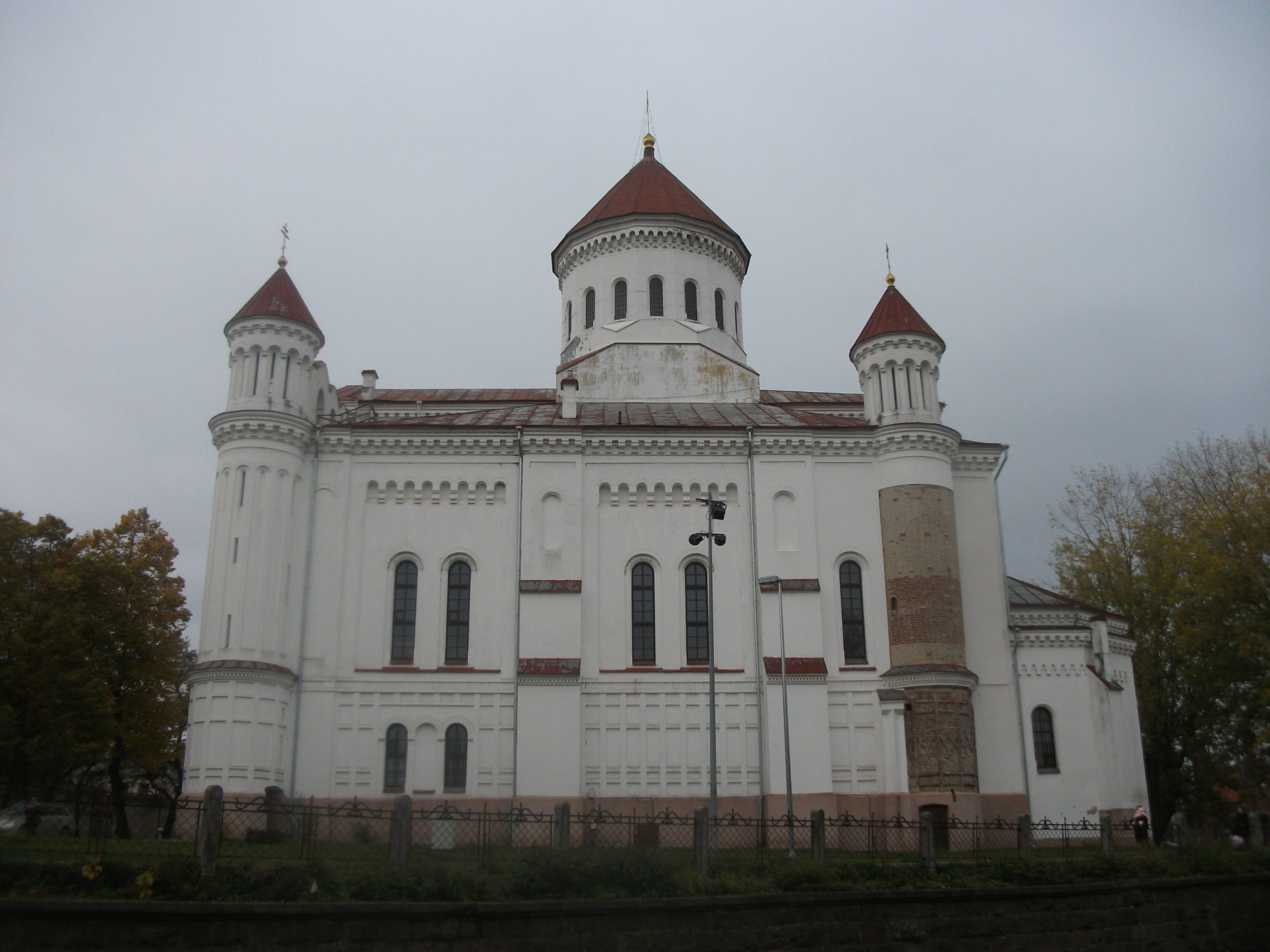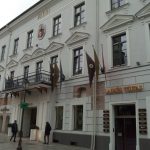
Polish King Jan Sobieski, Russian Emperor Alexander I and French Emperor Napoleon I visited the mansion on various occasions. The building was reconstructed in 1839-1841. The present façade is ClassicalA Florentine artist Michelangelo Palloni, was invited from Italy in 1674 to work at Pažaislis monastery and church near Kaunas, and Mykolas Kazimieras Pacas then commissioned him to paint frescoes for of this estate.Unfortunately, none of the original interior, which also included rich stucco work, remainsAll photos are copyrighted by Vladislav B. Sotirovic© Vladislav B. Sotirovic 2022
Continue Reading
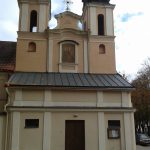
According to legend, the monastery and wooden church were built circa 1332 in the burial spot of the Franciscan monks that had been martyred by Lithuanian pagansThe building complex is formed in the mid-18th century. Today, the church possess six Late Baroque-style altars, with the main altar having a picture of the Holy Virgin Mary that is considered to be miraculous. A copy of the picture is painted on the façade in 1742 The monument to famous Lithuanian neo-Classicist architect Laurinas Gucevičius, the founder of Vilnius neo-Classicism, is erected in 1994 in the square in front of the church. All photos are copyrighted by Vladislav B. Sotirovic© Vladislav B. Sotirovic 2020
Continue Reading

Martynas Mažvydas National Library of Lithuania is a national cultural institution open to all users, active in the areas of dissemination of information, culture, science, and education, performing library activities and ensuring implementation of the national information policy falling within its competence The mission of the library is to be the Lithuanian space of knowledge-creating value for the public The vision of the library: to become an integral part of the state's information policy, culture, education, science, and economic progressAll photos are copyrighted by Vladislav B. Sotirovic© Vladislav B. Sotirovic 2019
Continue Reading
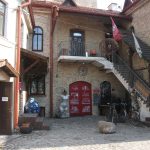
Užupio street is the main street in the city's district of Užupis. The district was in the Soviet time one of the most dilapidated districts in Vilnius. Many of the buildings did not have electricity and sanitary facilities, and the streets were unlitThe River Užupis which separates Užupis district from the Old Town. On one side of the river is a unique ensemble of sacred buildings and a park, while on the other side is "Republic of Užupis", where a number of artists live and work"Angel of Užupis" sculpture. An angel is playing a trumpet that provides ideas about Užupis to others and protects the district. The 24th Article of the Constitution of Užupis, for instance, says that "Everyone has the right to understand nothing". The district is separated from the Old Town by the River Vilnia on three sides, and by a high hill on the fourth sideAll photos ...
Continue Reading

Monument to the Gaon of Vilnius Elijah ben Solomon Zalman (1720-1797) called "Jewish Saga". The monument is located on the place where he lived. The house was destroyed during WWII and it was not restored. Nearby the monument there is a memorial plaque in Lithuanian and Hebrew on a building at Žydų (Jewish) Street Antokolski Street in Vilnius Old Town's Jewish Quarter. In this street the famous 19th century sculptor Mark Antokolski lived in 1843-1862. It was here he created his first sculptors depicting the inhabitants of his native quarter, which later gained recognitionMėsinių Street in Vilnius Old Town. That was one of the longest and most important street in the Jewish QuarterAll photos are copyrighted by Vladislav B. Sotirovic© Vladislav B. Sotirovic 2019
Continue Reading
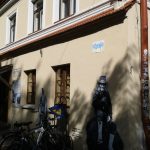
The Galera Gallery in the Užupis Art Incubator also operates there, where exhibitions of various kinds of art are organizedGalera of Užupis is an Alternative art gallery. That is a place similar to the former Christiana district in Copenhagen in DenmarkThe Užupis district and its Art Incubator are separated from the Old Town in Vilnius on three sides by the River Vilnia, and by a high hill on the fourth sideAll photos are copyrighted by Vladislav B. Sotirovic© Vladislav B. Sotirovic 2020
Continue Reading
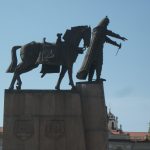
Grand Duke Gediminas is considered as the founder of the city of Vilnius. The monument is located in front of the Royal Palace and Cathedral Basilica in the very downtown of VilniusGediminas was a diplomatic politician, creating ties with the Roman Pope and other European rulers. He created favourable conditions for merchants and guildsmen to come to the city. Gediminas was a Grand Duke of the Grand Duchy of Lithuania from 1316 to 1341During the time of Gediminas, people of different ethnicities and confessions began to live in Vilnius. He is the founder of the Gediminian-Jagelonian ruling dynasty of Lithuania and later of Poland as well (till 1572)All photos are copyrighted by Vladislav B. Sotirovic© Vladislav B. Sotirovic 2018
Continue Reading
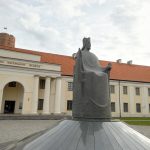
Originally, the Vilnius Lower Castle's jurisdictional court and administration was housed in this building during the 17th and 18th centuries. In the 18th century it was reconstructed into a weapons store-house and militarry baracks. Today, the museum holds the most important archaeological, historical, and ethnic cultural collections of Lithuania that cover Lithuania's history from the Stone Age to the present-day. In front of the building is a monument to King Mindaugas In 2003, a monument to King Mindaugas was erected in the square in front of the building of New Arsenal (today Lithuanian National Museum)In the 19th century, an entrance in the Classical style was biultAll photos are copyrighted by Vladislav B. Sotirovic© Vladislav B. Sotirovic 2018
Continue Reading
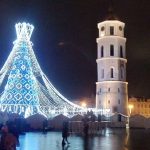
Christmas Tree decoration at the Cathedral Basilica Square in Vilnius. The belfry is seen in the backgroundChristmas decoration in front of the principal building of the castle complex in Vilnius Old Town - Cathedral BasilicaCathedral Basilica of Vilnius is erected on the place of the pagan altar with a ceasred fire to the pagan god Perkūnas (god of Thunder)All photos are copyrighted by Vladislav B. Sotirovic© Vladislav B. Sotirovic 2019
Continue Reading

The Royal Palace at the foot of the Castle Hill was a residence of the Grand Duke of LithuaniaThe Lower Castle is related with the times of Sigismund the Old and Sigismund August, Qween Nona and Barbora Radvilaitė (16th century)In the 16th century the Royal Palace with its Inner Courtyard was an Italian-style palace with four wings and attics. The building around encircled the Inner Courtyard of 2,500 square metres and were connected to the eastern wall of the Cathedral Basilica by a roofed galleryAll photos are copyrighted by Vladislav B. Sotirovic© Vladislav B. Sotirovic 2018
Continue Reading

The Old Campus in the Old town - Rectorate building. On April 1st, 1579 the King of Poland and Grand Duke of Lithuania Stephen Bathory issues a royal charter recognizing the Jesuit College into a universityThe Old Campus in the Old town - Rector's Office and former Astronomical Observatory building (right) and the Central Library building (left) with the Central Library Courtyard in front of the buildingsThe History Facutly building (left) and the Central Library building (right) with the arched gates to Mikalojus Dukša Courtyard (left) and Mathias Casimir Sarbievius Courtyard (forward). The Old Campus of the university has 13 courtyardsAll photos are copyrighted by Vladislav B. Sotirovic© Vladislav B. Sotirovic 2018
Continue Reading
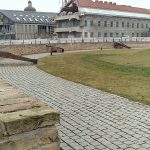
The architect of the Vilnius Bastion is unknown. The building that rose in the early 17th century is attributed to the period of late Renaissance and in that period Vilnius did not have a municipal architectThe wars of the mid-17th century and the 18th century weakened the military power of the Grand Duchy of Lithuania. The army led by the Russian Emperor Aleksey Mikhailovich approached Vilnius in August 1655 and seized the cityWhen Vilnius was liberated in 1660, the city's defensive fortifications needed repair. However, there was not enough funds and the citizens were unable to maintain defensive fortifications, supply them with arms and gunpowder and provide securityAll photos are copyrighted by Vladislav B. Sotirovic© Vladislav B. Sotirovic 2020
Continue Reading

The church is inconspicuous from the street, as its façade does not face the streetThe 51 meter-tall dome can be seen from seven Old Town streetsThe Dominican Church of the Holy Spirit is one of the most magnificent churches in Vilnius. It is an excellent monument of high and late Baroque All photos are copyrighted by Vladislav B. Sotirovic© Vladislav B. Sotirovic 2018
Continue Reading
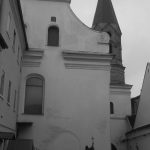
This is the first Evangelical Lutheran Church (Kirche) built-in Vilnius in 1555 on the initiative of the Chancellor of the Grand Duchy of Lithuania Nicholas Radziwiłł the Black. In front of the church, there is a monument erected to Martin Luther The church was rebuilt in 1662 and substantially reconstructed in 1738-1744. In 1944 it was closed down. In 1993 it was returned to the parishioners and renovatedThe church has a single nave and an original pentagonal shape. Its magnificent high altar was designed by German Protestant architect Jan (Johan) Krzysztof GlaubitzAll photos are copyrighted by Vladislav B. Sotirovic© Vladislav B. Sotirovic 2019
Continue Reading
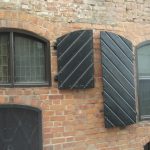
End of Stiklų St. on the intersection with Dominikonų St. and Šv. Ignoto St. in the Old Town in VilniusIn Stiklų St. No. 4 stands a typical building with a so-called Courtyard of the Printing House. Its history goes back to the 15th century. In the 16th century it held the Mamonichi printing house. A Gothic building in the courtyard with the exterior and fragments of the interior was reconstructed in 1974. In front of it a sculpture of "The Chronicler" is erected in 1973Wall (right) of the former Russian Orthodox church in Stiklų St. No. 17All photos are copyrighted by Vladislav B. Sotirovic© Vladislav B. Sotirovic 2020
Continue Reading
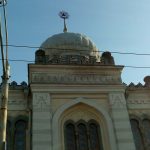
The architect Michail Prozorov designed the rectangular building with three-walled apse according to the requirements of Karaim liturgyThe oriental-style exterior has a protruding central part and the onion-shaped dome over it. The distinctive exterior of the building emphasises its unique purposeIn 1949, the Kenessa, along with many other sacral buildings, was nationalized and closed down. In 1988, it was returned to the Karaim community. In 1993, it was re-consecrated and has remained open sinceAll photos are copyrighted by Vladislav B. Sotirovic© Vladislav B. Sotirovic 2020
Continue Reading
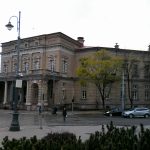
The Library of the Lithuanian Academy of Sciences was established in 1941 together with the Academy of Sciences, in the building of the former State Wróblewski LibraryBetween two world wars, State Wróblewski Library was one of the largest libraries in Vilnius. It was founded by lower Tadeusz Wróblewski. In 1941, the new Library inherited from it some 163.000 volumes, more than 35.000 manuscripts, large collections of numismatics, cartography, and artworksAfter WWII, the Library was supplemented by extensive collections from other libraries. Today, its stocks count more than 3.77 mln itemsAll photos are copyrighted by Vladislav B. Sotirovic© Vladislav B. Sotirovic 2020
Continue Reading

The Church of the Heart of Jesus is a significant monument of Baroque (finished in 1756). It is the only Roman Catholic church in Lithuania to be built along a Greek Orthodox cross designThe church has a large octagonal cupola (dome) and a very reach the elegant exterior. The interior is no less magnificent, although it was severely damaged during the Soviet timeAfter 1945, a prison was established in the church and convent buildings. The church interior and the plan of the convent buildings were transformed. After 1990, the sacral buildings are returned to their former ownersAll photos are copyrighted by Vladislav B. Sotirovic© Vladislav B. Sotirovic 2020
Continue Reading
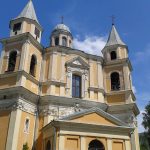
The interior sculptural décor was created by Pietro Perti (Italian master) in 1700-1705. Twin towers were built on in the 18th century. It was built by the efforts of Casimir Sapieha the Younger (1637-1720) in 1694-1717 On the façade frieze two Christian soldiers taken into captivity by the Muslims are represented. The main goal of the Trinitarian Order was returning such captives to their homelands The church has an impressive cupola (dome), the interior is adorned with stucco relief works and sculptures - a large part of them is survived. The church is a "sister" to the Church of St. Peter and St Paul in Vilnius (Antakalnis)All photos are copyrighted by Vladislav B. Sotirovic© Vladislav B. Sotirovic 2019
Continue Reading
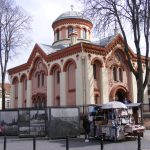
The Russian Orthodox Church of St. Parasceve (or Piatnickaya Church) is located in the centre of Vilnius' Old Town where a Russian Orthodox Church stood since the times of the Lithuanian Grand Duke Algirdas in the mid-14th centurySt. Parasceve Russian Orthodox Church is the oldest surviving Russian Orthodox Church in Lithuania located in the former Russian quarter of the Old TownThe church was reconstructed in the mid-19th century by the famous Russian architect N. ChaginAll photos are copyrighted by Vladislav B. Sotirovic© Vladislav B. Sotirovic 2021
Continue Reading
